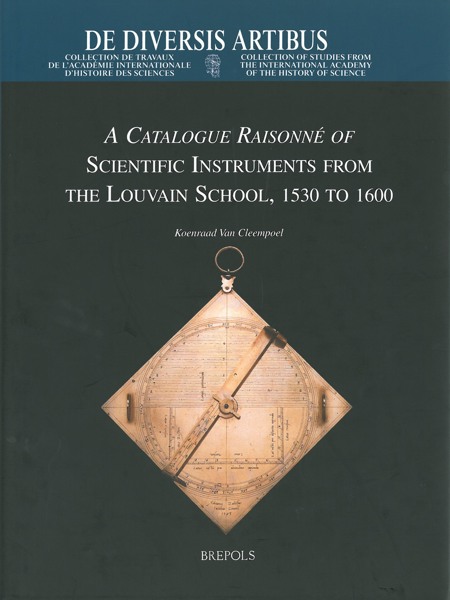
A Catalogue Raisonné of Scientific Instruments from the Louvain School, 1530-1600
K. Van Cleempoel
- Pages: 284 p.
- Size:200 x 260 mm
- Illustrations:100 b/w, 26 col.
- Language(s):English
- Publication Year:2002
- € 75,00 EXCL. VAT RETAIL PRICE
- ISBN: 978-2-503-51218-1
- Hardback
- Out of Print
- € 75,00 EXCL. VAT RETAIL PRICE
- ISBN: 978-2-503-56121-9
- E-book
- Available
This object-based study concentrates on scientific instruments made in Louvain between c. 1530 and c. 1600, a period in which the university fell from the peak of its importance into a state of decline.
"Zijn studie opent de weg naar verder studie van wetenschappelijke instrumenten van andere oorsprong en andere tijdperken." (...) "De rijk geïllustreerde Catalogue Raisonné is een uitstekend, baanbrekend werk dat in elke bibliotheek, die zich met zonnewijzers, astrolabia en 16 eeuwse mathematische instrumenten bezig houdt, thuis hoort." (J. De Graeve in Scientiarum Historia, 28, 2002, 2, p. 109-110)
"As David King writes in his preface, 'The field desperately needs competent catalogues of instruments' (p. ix) - and here we find a worthy example." (H. Highton in British Journal for the History of Science, Vol. 38/2, June 2005, p. 225-226)
This object-based study concentrates on scientific instruments made in Louvain between c. 1530 and c.1600, a period in which the university fell from the peak of its importance into a state of decline. The instruments are characterised by elaborate decoration and by numerous technical innovations. The book comprises two parts: an introduction followed by a catalogue raisonné of almost ninety instruments from the Louvain masters, both signed and unsigned ones. The introduction outlines the circumstances of the foundation of this ‘Louvain school of instrument makers’, which entailed the merging of an intellectual center (based in the university) and a material culture (based in the workshops). A similar symbiosis occurred elsewhere in Europe, but never on the scale of Louvain. The presence of the Spanish Court in Brussels around 1540–1550 helped to provide the workshops with important commissions. Their role as a Maecenas is also discussed. The most important instrument makers were Gerard Mercator, Michael Piquer, Gualterus Arsenius, Adrian Descrolières and Adrian Zeelst. Little was previously known about these men - apart perhaps from Mercator - and even less about the output of their workshops. This book attempts to present for the first time a comprehensive survey of these workshops and how they may have influenced one another.




